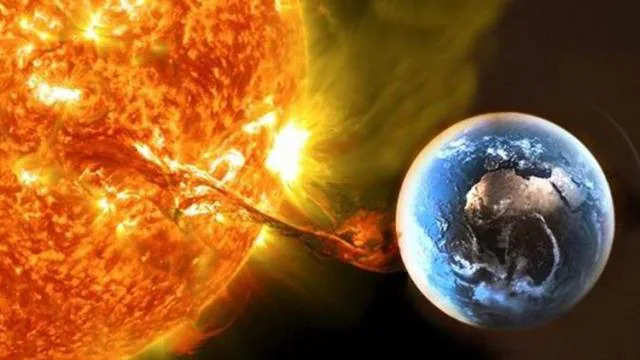Sometimes colorful sky, sometimes GPS malfunction, solar flare hitting the earth, fatal consequences seen, can be even more dangerous.

Science News Desk – Over the weekend, millions of people around the world were treated to a mesmerizing sight as the Aurora Borealis and Aurora Australis filled the sky. This is the light that is typically seen in the upper regions around Earth's poles, but has moved toward the mid-latitudes due to the Sun's increased activity. The same geomagnetic storms that produce auroras can cause destruction to our planet's man-made infrastructure. These storms, caused by high-energy particles from the Sun hitting our atmosphere, have the potential to destroy electrical grids and satellites. So what impact did this recent stormy weather have on space?
Around May 8, an active region of the Sun exploded, sending a billion-ton cloud of magnetic and electrically charged material flying toward Earth in a phenomenon known as a coronal mass ejection (CME). This proved to be the first of several consecutive CMEs, which later merged into a single, massive structure. It hit our planet's magnetosphere. It is a region of space near Earth that is dominated by the terrestrial magnetic field. As subatomic particles are pushed down from the CME, channels of electrical current flowing through a part of the atmosphere called the ionosphere accelerate.
In addition to triggering auroral displays, it can cause powerful magnetic fluctuations on the Earth's surface. As a result, electrical currents may flow through power grids, pipelines and railway lines, potentially disrupting normal operations. Subatomic particles emitted from CMEs can damage solar panels and the electronics of satellites. On Saturday, Elon Musk said his company SpaceX's Starlink internet satellites were under “a lot of pressure” due to the storm, “but are still holding up.” Disturbances in the ionosphere were exacerbated by a series of bright explosions on the Sun called 'flares', which dumped high energy radiation onto the sunlit side of the Earth. Flare activity is associated with radio blackouts that can interfere with high-frequency radio communications, which occur between aircraft during trans-oceanic flights.
GPS error observed
There are indications that the storm has caused some disruption to transatlantic flights, but these reports are still being assessed. Shawn Dahl, service coordinator for the Space Weather Prediction Center at the National Oceanic and Atmospheric Administration (NOAA) in Colorado, told US National Public Radio that power grid operators were busy 'working to maintain proper, regulated flows without any disruption' . He also said that some GPS systems had difficulty locking onto locations and presented inaccurate positions. These GPS problems appear to have caused disruption to navigational systems in farm equipment in the US. Many tractors use GPS to place precise lines in the field, avoiding gaps and overlaps.
Problems arose during the peak of planting in the Midwest and Canada. Some of this may sound like a Hollywood disaster movie. Still, while GPS problems caused disruption to agriculture, the impact was not widespread across the entire Earth. For many or most people, life appeared to go on without interruption. how come? Awareness and preparedness definitely helped. What we just experienced was undoubtedly an unusually strong space weather event. It's still early days and scientists will be analyzing the May 2024 storm for years to come.
Most powerful storm in 20 years
However, early indications are that last weekend's geomagnetic storm was the most powerful since the 'Halloween storm' of October 2003. Apart from the beautiful lights in the sky, the negative impacts of the 2024 storm are not yet completely clear. At this stage, it does not appear that any catastrophic failure has occurred, but infrastructure operators will take stock to understand if, and how, their systems were affected. Behind the scenes, national agencies such as NOAA and the Met Office in the UK were monitoring the activity, issuing forecasts and alerts to interested parties and liaising with experts and governments.

